We love resistance bands for their ease of use, versatility and let’s face it…low price! Whether you’re new to exercise, an experienced gym goer, or even injured and on your recovery journey, resistance band exercises can give your muscles a great challenge.
Bands can be used to target any body part without putting extra pressure on the joints, and while common strength exercises focus on bigger muscle groups, resistance band exercises can be great for targeting smaller muscles that also work as stabilisers.
To get you started with bands, we’ve created our list of the nine best band exercises to do from home.
If you’re travelling or don’t have access to a gym, get yourself some form of resistance bands, a little space and hey presto, you’re ready for a great workout.
Here’s our list of the best band exercises for you to try:
1. Band Side Taps [Gluteus Medius]
Looking to improve your hip stability but you don’t have time to hit the gym this week? Get started with this banded side tap exercise to get those glutes switching on.
Technique:
- Start by placing your band around your knees
- Gently bracing your core and sticking your bottom out, slowly tap out to the side, diagonally behind and behind you using one leg
- Repeat this 5 times on each side for 3 sets
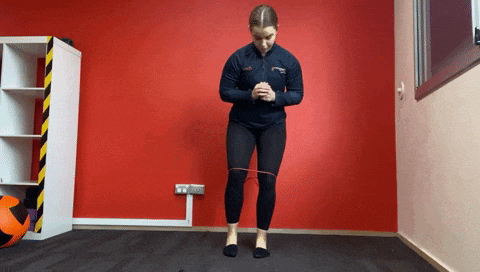
2. Banded Bird Dog [Core Stability]
The Bird Dog exercise is a great way to engage the core and build a foundation for low back function.
Technique:
- Start by making a small loop on both ends of your band and wrap it around one foot and the opposite hand
- Getting into a 4-point kneeling position [wrists under shoulders, hips over knees], extend your right arm and left leg whilst keeping your hips level with each other. Slowly return to the starting 4-point kneeling position
- Repeat this 10 times on each side for 3 sets
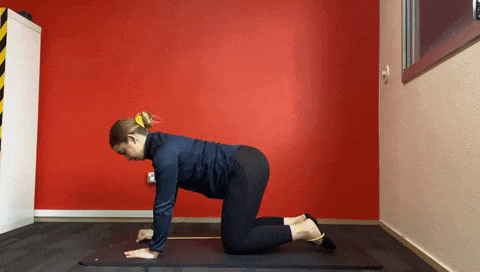
3. Banded Book Openers [Thoracic Mobility]
If you have been struggling with tight shoulders, back or neck from sitting at the desk all day, the book opener exercise can help improve the mobility of your thoracic spine.
Technique:
- Start by lying on your side with hips and knees stacked on top of each other
- Starting with arms together, slowly open the chest by pulling the band and rotating to the other side of your body whilst keeping your hips and knees directly on top of each other
- Repeat this 10 times on each side for 3 sets.
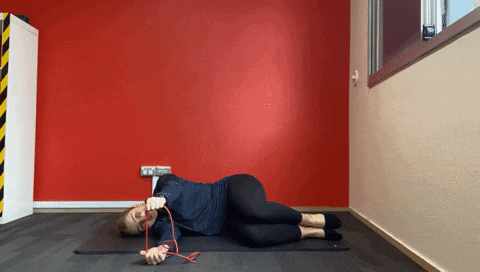
4. External Rotation Step Outs [Rotator Cuff]
Strengthen your rotator cuff for stronger, healthier shoulders with this isometric exercise.
Technique:
- Start by anchoring your band to a door or window
- Stand side-on to the band with your outside shoulder holding the band. Have your elbow at 90 degrees in line with your shoulder. Slowly step out and hold
- Hold for 30 seconds for each shoulder for 5 rounds
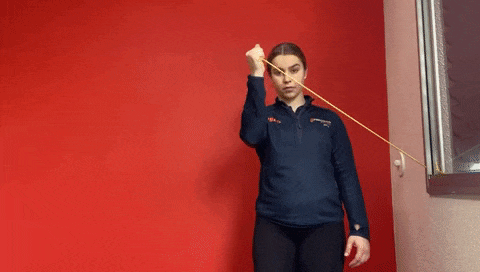
5. Banded Fire Hydrants [Glutes/Core Stability]
Looking for an exercise to challenge your core and strengthen your glutes? Give this one a go!
Technique:
- Start by tying the band in a loop around your knees and then getting into a 4-point kneeling position [wrists under shoulders, hips over knees]
- Keeping the core engaged, slowly lift your left leg to the side, stopping at hip height
- Repeat this 10 times on each side for 3 sets
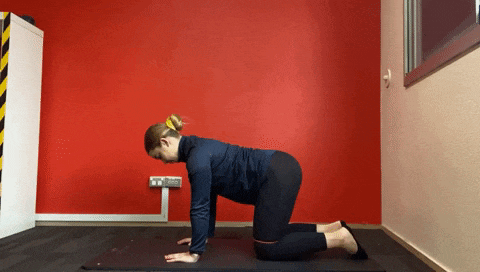
6. Scap Setting [Shoulder Stability]
This exercise is a great start for shoulder/upper back rehabilitation, to start to engage those muscles of our upper back/shoulders!
Technique:
- Start by holding the band in front of you at shoulder width, with the elbows at 90 degrees and slightly tucked forward
- Set your shoulder blades by a gentle squeeze back and down towards your bottoms
- Keeping our elbows by our side, pull out on the band so we are creating a rotation at our shoulder joint
- Repeat this 10 times for 3 sets
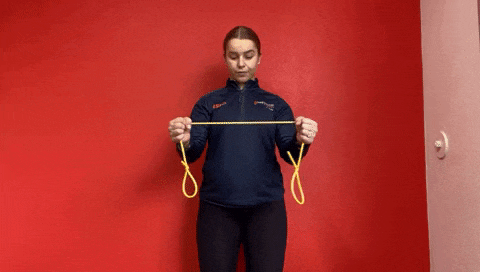
7. Serratus Punch [Shoulder Stability]
Have you been told you have ‘winged’ shoulder blades? Or poor shoulder control? Give this exercise a try at home or at the gym!
Technique:
- Start by tying the band around a door or in a window sill (below shoulder height), face away from the band holding it in one hand (the band shoulder be under your arm)
- Press the band forward and up to eye height – in a ‘raising a glass’ manner
- Repeat this 10 times each side for 3 sets
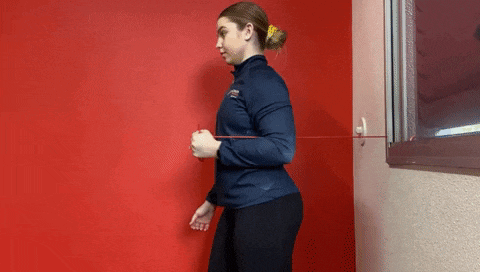
8. Monster Walks [Gluteus Medius]
A great way to switch your glutes on to improve your hip stability! This can easily be done as a part of a home program or prior to a gym session as a warm up.
Technique:
- Start by placing your band around your knees
- Gently brace your core and stick your bottom out, and then take small steps as if you’re walking along a set of train tracks (staying low)
- If you’re more advanced, you can walk backwards too!
- Continue for 30 seconds for 5 rounds
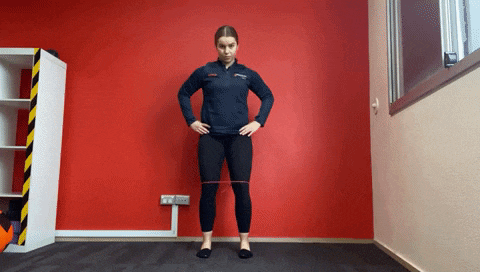
9. Wall slides [Shoulder Stability]
Wall slides are a great way to activate the stabiliser muscles of our shoulder! Give this one a go before upper body exercises.
Technique:
- Start by placing a loop band around both hands
- Keeping elbows at shoulder width, create tension on the band by pulling hands apart (this should make our hands the same width as our elbows)
- Use the wall as a guide, to move our arms up along the wall until fully straight and then return down to shoulder height
- Repeat this 10 times for 3 sets
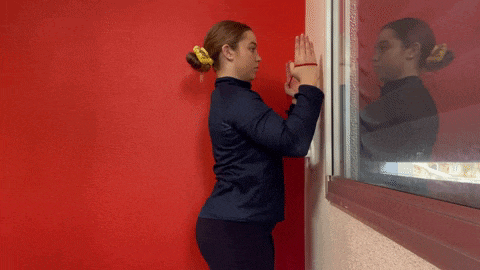
Slowly Does It
That’s our list of the best band exercises that you can do from home and we are completely confident when we say that if you incorporate these exercises into your weekly routine, you’ll see (and feel) some great benefits, especially those of you who spend long hours in seated positions!
As with most exercise, we would highly recommend that you take it slowly and feel your way in. If new to exercise, it can feel uncomfortable, even painful, so please be cautious around especially sore areas and if in any doubt get in touch with a professional who can help.
This article was written by Physiotherapist – Rebecca Beuk, from Precision Physio Concord clinic.

0Comments